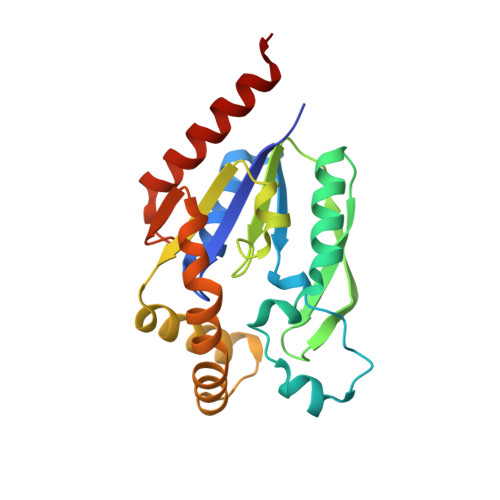Structural and Biochemical Studies on the Reaction Mechanism of Uridine-Cytidine Kinase
Tomoike, F., Nakagawa, N., Kuramitsu, S., Masui, R.(2015) Protein J 34: 411-420
- PubMed: 26510656
- DOI: https://doi.org/10.1007/s10930-015-9636-8
- Primary Citation of Related Structures:
3W34 - PubMed Abstract:
Uridine-cytidine kinase catalyzes phosphorylation of the pyrimidine nucleosides uridine and cytidine and plays an important role in nucleotide metabolism. However, the detailed molecular mechanism of these reactions remains to be elucidated. Here, we determined the structure of the ternary complex of Uridine-cytidine kinase from Thermus thermophilus HB8 with both cytidine and β,γ-methyleneadenosine 5'-triphosphate, a non-hydrolysable ATP analogue. Substrate binding is accompanied by substantial domain movement that allows the substrate-binding cleft to close. The terminal phosphodiester bond of the ATP analogue is in an ideal location for an inline attack of the 5'-hydroxyl group of cytidine. Asp40 is located near the 5'-hydroxyl group of cytidine. Mutation of this conserved residue to Asn or Ala resulted in a complete loss of enzyme activity, which is consistent with the notion that Asp40 acts as a general base that activates the 5'-hydroxyl group of cytidine. The pH profile of the activity showed an apparent pK a value of 7.4. Based on this structure, a likely mechanism of the catalytic step is discussed.
Organizational Affiliation:
Graduate School of Frontier Biosciences, Osaka University, 1-3 Yamadaoka, Suita, Osaka, 565-0871, Japan.
















